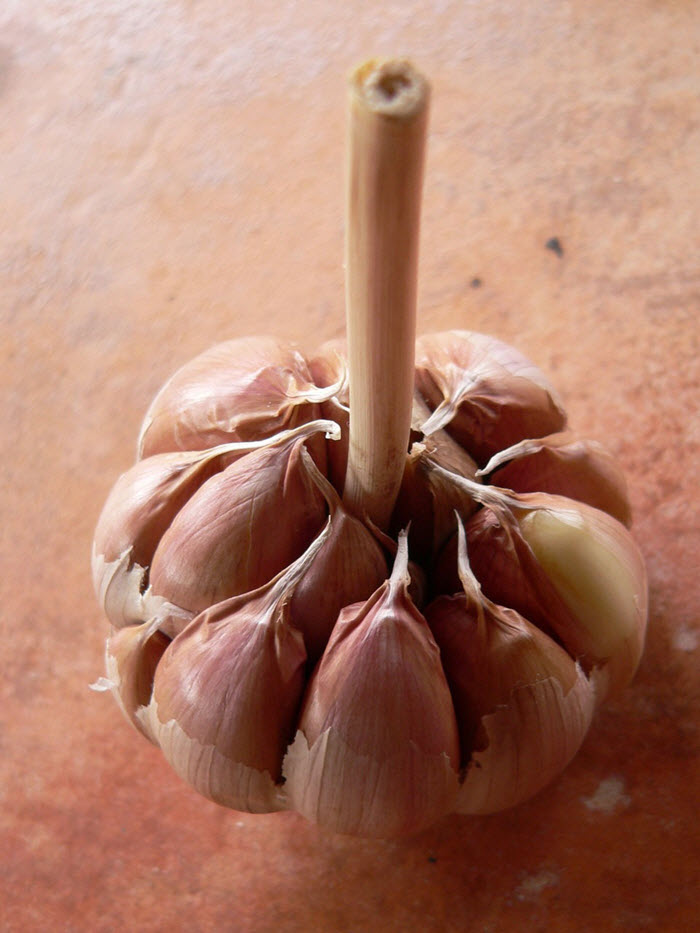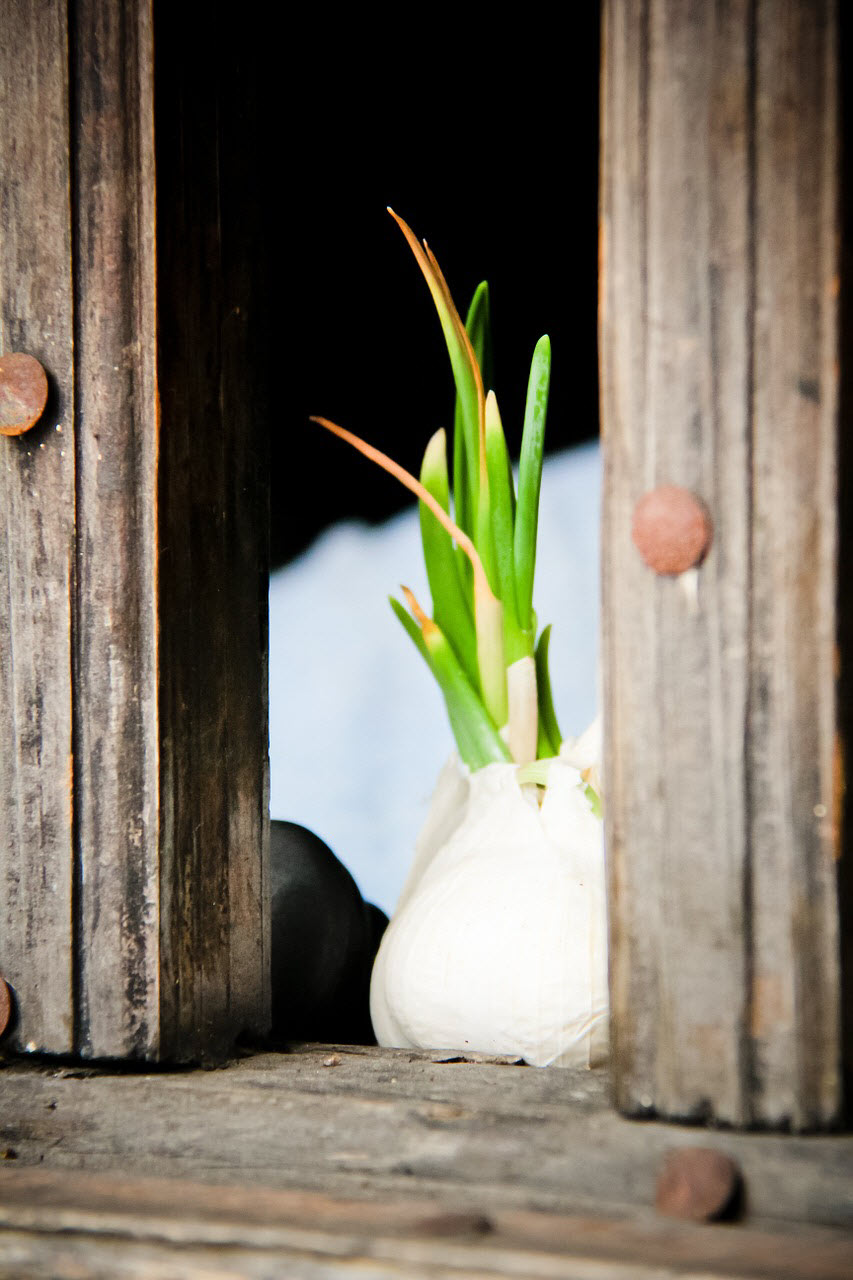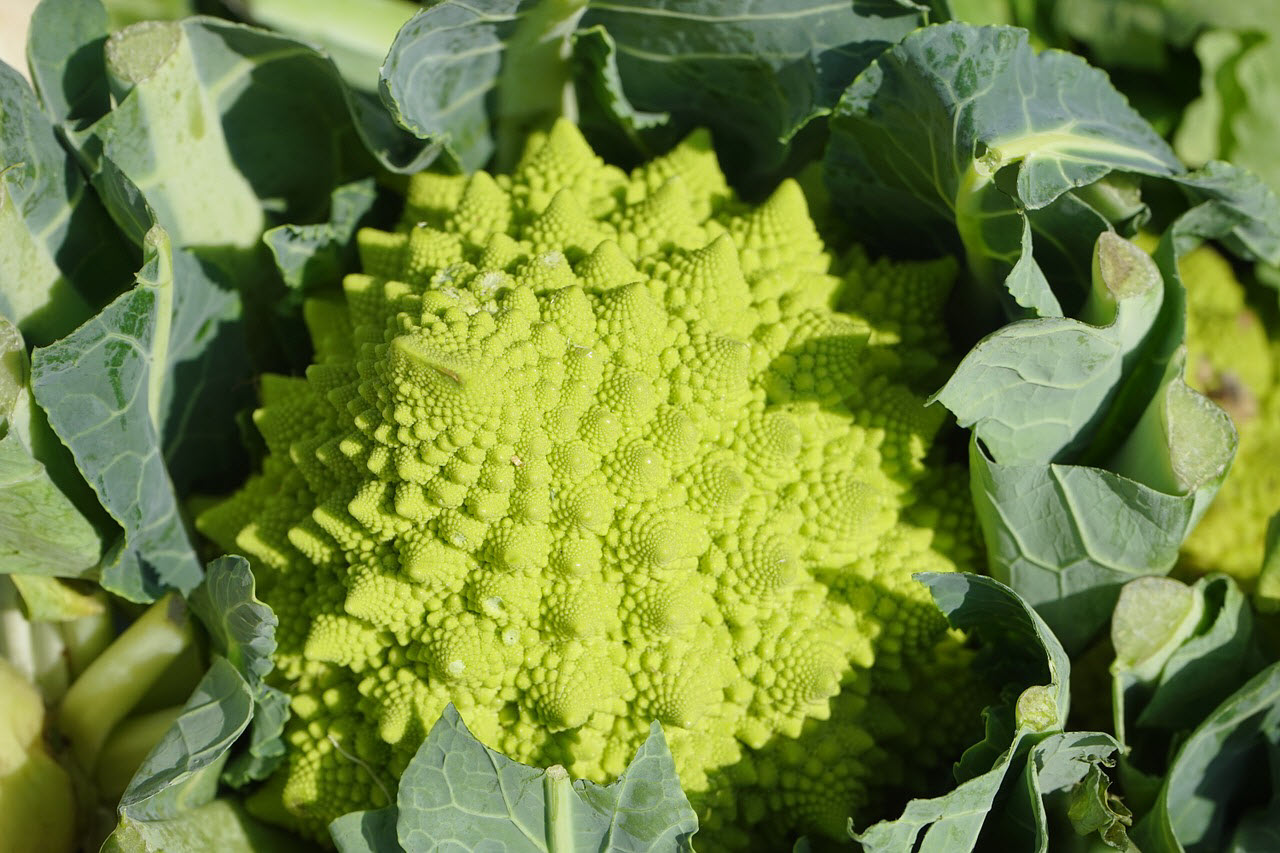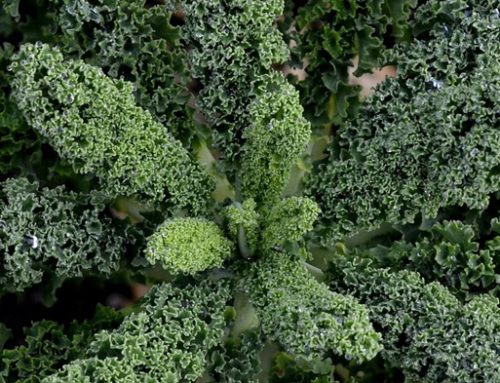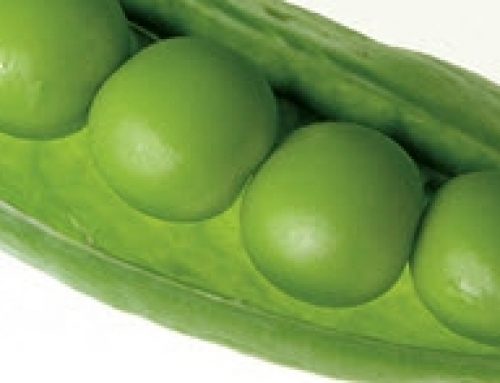Autumn can be an incredibly productive time in the garden, the soils are warm and there is still enormous potential for plant growth before the winters cool weather really begins. It also heralds the dawn of that time in the year earmarked for classical food crops such as garlic which are the treasure of the winter vege garden. Such an incredibly hardy and simple plant to grow it takes pride of place in many gardens developing vigorously throughout the late autumn, winter and spring months.
Best time
Within the garden community there is often an argument between growers as to the best time of the year to plant garlic. If you remember I have previously written about a process known as vernalisation, this process in plants which is triggered by cooler weather has been found to initiate specific growth development in some plants. In the case of garlic they can be stored in cooler conditions, usually around 10o Celsius, for several weeks prior to planting, this will bring on early shoot development when planted in the ground. The best thing to remember with garlic is that they are a bulbous plant that requires the cooler weather to bring on shoot initiation and growth. Once that temperature is reached for a specific period the bulbs will produce leaf shoots and develop strongly through winter and early spring.
Where do you get ‘em?
In Tasmania there are lots of avenues to get suitable garlic bulbs for planting. You can simply go down to your best market or produce store and pick up some strong local Tasmanian bulbs or you can buy them as commercial garlic varieties at your local nursery or garden centre. If you decide to purchase your bulbs from the local store please do not bother with imported varieties, most overseas imported garlic have been treated usually with a low dose irradiation methods, and it is therefore not very suitable for planting. Lately nurseries and specialty suppliers are providing quality named varieties, and for some people who are garlic connoisseurs this might be the way to go. You will find that not all garlic behaves and/or tastes the same, some varieties for example particularly the soft neck varieties, are better for platting, typical of those you see hanging in traditional farmhouse kitchens, while others might be better suited to certain climate areas, soil types, etc.
Preparation
When preparing garlic for planting you can keep them whole, don’t break the bulbs up into individual “bulblets” or “cloves” until just before planting, as they will store better. Store them in a dry paper bag somewhere cool with temperatures as detailed above. You do not need to keep them in the fridge to keep them cool, a cool cupboard or basement area will be fine. Planting can take place as early as mid-March through till about late April, if you are really late then not beyond early May ideally. The later you plant the more likely your crops will have smaller bulbs due primarily to a reduction in the growing period available to the crop. The current “Indian summer” being experienced across Australia at the moment might mean that you may wish to delay your planting till early April, but for best results see what the temperatures do in your area, you can possibly plant them earlier.
The ground
Most well drained soils in full sun are suitable for planting your garlic; they are very tolerant of a wide range of soils as long as they have enough moisture through their main growing period and into spring. Often the best location is a spot in the garden where you have previously had a plant crop over summer where a lot of organic compost has been applied and is now broken down. No need to add any more compost, although the addition of additional compost will not do any harm. Avoid high nitrogen based plant foods or large quantities of pelletised chicken manures there is simply no need.
Planting
If you want to get maximum quantities from limited space garlic is a great crop for that. You can space them as close as 100mm apart and up to 200mm between rows if you choose to have rows. Who ever said you have to have rows? Please experiment with other planting patterns you just might impress yourself and others of course!! Usually the bulblet can be placed just under the soil surface but not too deep. Even if they are planted on their side they will rectify themselves as they grow. Water well after planting and then leave them alone, they should do the rest. If the weather stays really dry you can water them from time to time just to make sure they have some moisture to start. Water well when they are in leaf and into the spring months. Water can be withheld in the early summer a few weeks before harvesting.
More things to plant
As the weather gradually starts to cool you can start getting your winter legumes such as broad beans and peas back in the ground seeing that the hot weather finished them off during summer. If your soil is a well-used production garden you will not need to add a lot of additions to the soil, as I have previously stated there is not much need to add the usual lime or dolomite as in most cases they cope well without it. Just the addition of some good home based compost and you will be set to trot! I just love the ‘Sugarsnap’ pea and ‘Snowpeas’ and I can never get enough of them straight from the vines. Such easy grow plants everyone should be growing them wherever they can; it is after all the year of the legume!!
Autumn brings forth a wonderful time to plant leafy vege before the really cool weather starts, crops such as lettuce, silverbeet, mustards, rocket and spinach can all go in and growing while the soils are warm.
Allium time
It is also a great time for the onions, start them from seed as they are cheap and easy to germinate and grow on, or buy the seedlings and get a bit of a head start. Sow your onion seed thickly in a shallow punnet type pot or tray and keep moist. Seedlings should emerge within 3 weeks and be ready for planting in 5 weeks and they are easy to divide and place out in the soil when you are ready to plant. Once again there is no real need to add any additional fertilisers to your soils particularly if you have added compost with a previous summer crop and have a loamy well structured soil.
Of cabbages and kings…
Some of the Brassica crops to get in at the moment include cauliflower, sprouting broccoli, kale, pak choi, and turnips (swedes), Some of the smaller headed cauliflower varieties like the easy grow ‘Snowball’ type will produce heads in late winter early spring and therefore be free of the persistent but not cold loving pests, cabbage butterfly and cabbage moth larvae. One unusual form of brassica is the Romanesco broccoli which is easy to grow from seed and produces well from late winter. Looking like a cross between broccoli and cauliflower it has a similar taste. By the way the plants can get huge and the heads are fractal marvels!!!! Get it from your local nursery or seed specialist.
Hurry curry
Another crop is the ever useful coriander which you should have in the garden at various stages of growth throughout the year. They grow easily from fresh seed and can be sown with gusto at two to three week intervals to allow for harvesting. Let some of them go to flower and then to seed. Seed heads are best collected when some of the seed has ripened and has started to fall off, but make sure the seed has browned on the stalk before harvest. Harvesting seed too early will not give you viable seed.
Mulch and gain
Try and get some winter mulches on your garden at this time of the year, a lot has been said about mulches keeping the soils too cool during winter, this is nothing but a gardeners tale and it is more often better to mulch than not to mulch at all. The best mulches for the production garden as I’ve mentioned before, are the composted hay mulches, see our earlier articles for more details on that. Currently standard hay is at a premium in Tasmania due to the dry conditions so good alternatives include older pea straw and even standard straw if you have nothing else. Adding compost to these is a good idea and will significantly add organic matter back into the soils. This will ensure you really do not need to add much else.
Garden makeover
If you are planning any sort of garden at the moment it is a great time to a get your evergreen plants into the ground and established. The soils will be staying warm for a number of weeks yet and this will mean that the roots of plants can begin to get established and give them a head start when the spring rolls around again. Ideally when establishing plants in a garden plant them with a small moat or swale around them so that water can collect around their root bases when you water, allowing it time to soak in deep. This way you can actually have successful plantings and save water at the same time, see further details in the free fact sheet Swale me away
And many other fact sheets and resources at: https://gardens.rtbg.tas.gov.au/watersense-gardening/
Also do yourself a favour over the next few weeks and get a copy of the timeless classic “Gardening Without Work: For the Aging, the Busy & the Indolent” (that should cover everyone!), from the well renown American garden columnist Ruth Stout. It’s a great read and a it will give you a good chuckle along the way.


